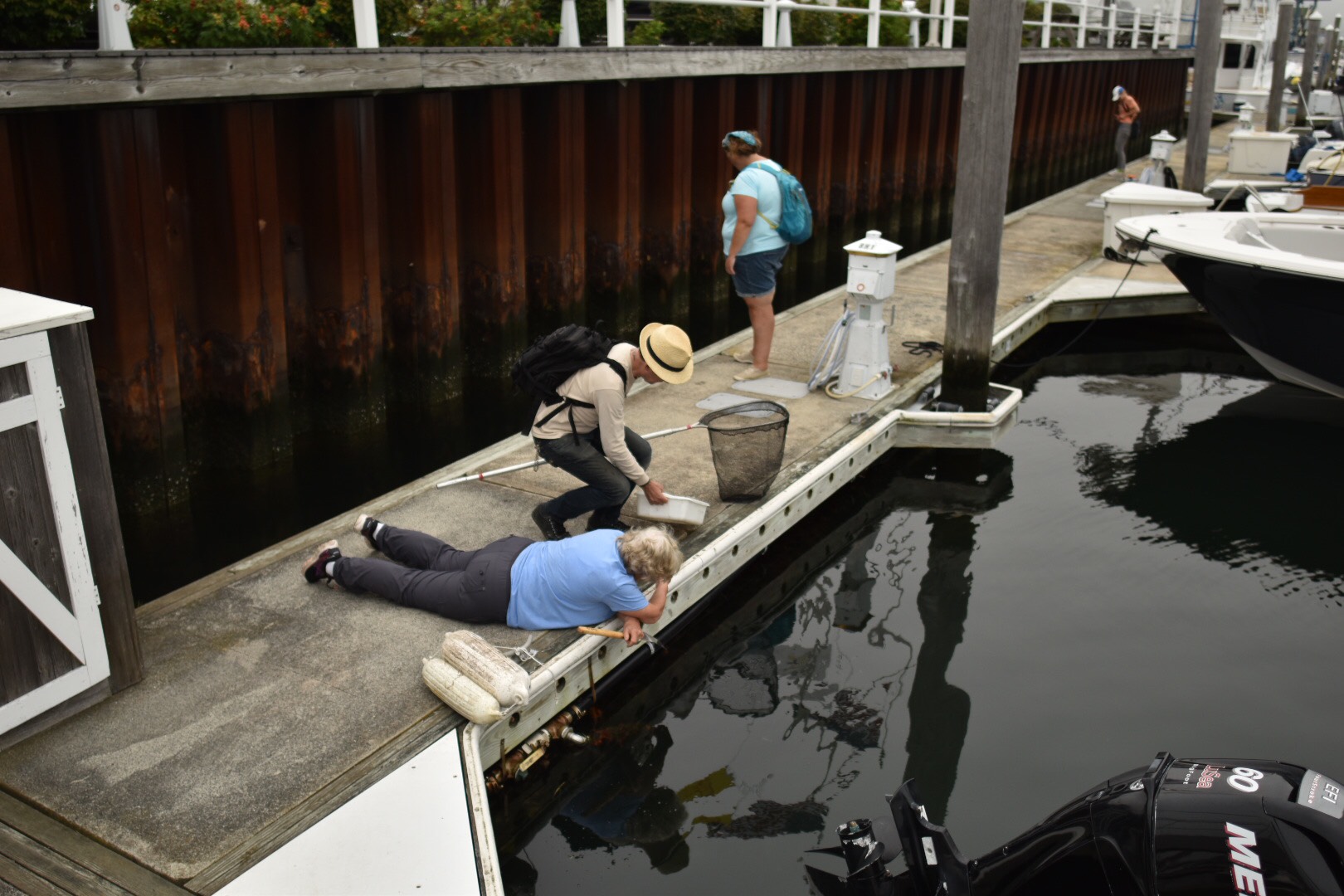
Volunteers take samples over the dock’s edge at Point Judith marina to check for new invasive species as part of the New England Rapid Assessment
Barely the size of a marble, a small white and pink-spotted sea anemone sways gently in the same plastic bag you would bring a goldfish home in.
“We haven’t seen it since 2013,” says Jim Carlton, a world-renowned researcher in aquatic invasive species from Williams Mystic. “It’s a little southern species with nice pink spots called *Aiptasiogeton eruptaurantia, and it’s a bit of a surprise to see it come back. It’s probably a sign of warming in southern New England.”
Little is known about this species, whose typical northern limit is Virginia, except for the occasional comment on the abundance and habitat, says Carlton, making predictions about any impacts (should it become abundant up here) a challenge.
The sea anemone was picked up at Point Judith Marina in Narragansett on one of the stops in a recent Rapid Assessment Survey for Marine Bioinvasions led by Carlton and a team of experts and students from dozens of institutions. The survey first began in 2000 with multiple regional partners including Rhode Island an MIT Sea Grant programs.
“We’ve been doing rapid assessments for marine bioinvasions on the New England coast for about 20 years now,” says Carlton. “The goal is to detect any new invasions in New England and then to see if older invasions [have]e been spreading and if any of those species are more or less abundant than what we expect to see.”
The group travels from Maine to New York, visiting various marinas where floating docks are hotspots for aquatic invasive species that are introduced from boats and have an artificial structure to attach to. In Rhode Island, the group collected samples from the docks at Save the Bay in Providence, Allen Harbor in North Kingstown, and Point Judith Marina.
Without climate change right now, in our lifetime, we would probably see very little moving.
When non-native species are introduced into a new environment they can wreak havoc as dominant predators or out-compete native species for food, and once established (such as the European Green Crab) they’re almost impossible to eradicate. But monitoring efforts, such as these rapid assessments, may help resource managers get a better handle on how the ecosystem is changing.
Multiple marine organisms attached to floating dock in Point Judith Marina, a hot spots for aquatic invasive species that are introduced from boats and have an artificial structure to attach to.
“Rhode Island is extremely grateful for Dr. Carlton continuing to come because these are the top taxonomists in the world for marine invasive species … because of their expertise, they [improve] our database,” says Kevin Cute, marine resources specialist at R.I. Coastal Resources Management Council (CRMC), explaining how this data helps the state keep a pulse on any new invasions.
As the team continues to catalog and assemble notes to determine any regional changes with marine species abundance or introductions, it’s evident to Carlton that climate change is pushing species north or south, depending on which hemisphere you live.
“Without climate change right now, in our lifetime, we would probably see very little moving. It’s like molasses over thousands of years. What’s changed is the rate of all the movements … I can’t think of a single poleward invasion that’s happening around the world now, in either the northern or southern hemisphere, that isn’t related to climate change because these are demonstrably warmer species that are moving into areas where they could never have lived before. There’s no other explanation for it.”
– Meredith Haas
